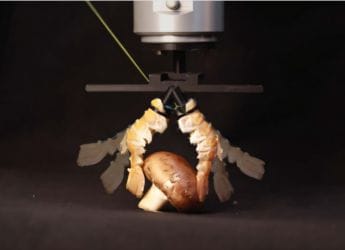- Home
- Science
- Science News
- Astronomers From China, Australia Jointly Discover Binary System Ejecting Common Envelope
Astronomers From China, Australia Jointly Discover Binary System Ejecting Common Envelope
The common envelope forms when one of the stars in a binary system starts losing mass to its partner star and then expands in size.

Photo Credit: YU Jingchuan
Binary stars are systems where two stars orbit each other at a close distance
A team of astronomers from the Yunnan Observatories (YAO) of the Chinese Academy of Sciences and the Australian National University have jointly discovered a binary system that is ejecting a common envelope. The scientists have managed to observe a common envelope evolution, which has long been thought to be a key step in binary star system formation, for the first time. Binary stars are systems where two stars orbit each other at a close distance. The observations were published in a research paper that was published in the Monthly Notices of the Royal Astronomical Society.
For the observations, the team of scientists from China and Australia took help from the Australian National University's 2.3-meter wide-field telescope and the Kepler telescope. Through their findings, the team observed a binary star system, which included a hot subdwarf and a white dwarf named J 1920. It was also noted that the two stars in the recently found star system are orbiting each other within 3.5 hours, and are slowly getting closer with time.
Scientists have found a common envelope emanating out of the star system at a speed of 200 km per second and saw the shell expanding further. The common envelope forms when one of the stars in a binary system starts losing mass to its partner star and then expands in size. This causes the system to become unstable and eventually causes the collision of the two stars into a single object. If a common envelope is successfully ejected, then the two stars do not merge into a single object and that results in the formation of extremely rare stellar objects like Type Ia supernovae, double black holes, and double neutron stars.
In the case of J 1920, a successful ejection of the common envelope happened nearly 10,000 years ago. While scientist B. Paczynski had theorised about the common envelope in 1976, scientists had been unable to observe one before.
Get your daily dose of tech news, reviews, and insights, in under 80 characters on Gadgets 360 Turbo. Connect with fellow tech lovers on our Forum. Follow us on X, Facebook, WhatsApp, Threads and Google News for instant updates. Catch all the action on our YouTube channel.
- Samsung Galaxy Unpacked 2025
- ChatGPT
- Redmi Note 14 Pro+
- iPhone 16
- Apple Vision Pro
- Oneplus 12
- OnePlus Nord CE 3 Lite 5G
- iPhone 13
- Xiaomi 14 Pro
- Oppo Find N3
- Tecno Spark Go (2023)
- Realme V30
- Best Phones Under 25000
- Samsung Galaxy S24 Series
- Cryptocurrency
- iQoo 12
- Samsung Galaxy S24 Ultra
- Giottus
- Samsung Galaxy Z Flip 5
- Apple 'Scary Fast'
- Housefull 5
- GoPro Hero 12 Black Review
- Invincible Season 2
- JioGlass
- HD Ready TV
- Laptop Under 50000
- Smartwatch Under 10000
- Latest Mobile Phones
- Compare Phones
- Realme P4x 5G
- OnePlus Ace 6T
- Nubia Flip 3
- Nubia Fold
- OPPO A6x 5G
- Samsung Galaxy Z TriFold
- Poco F8 Ultra
- Poco F8 Pro
- Asus ProArt P16
- MacBook Pro 14-inch (M5, 2025)
- Poco Pad M1
- Poco Pad X1
- Just Corseca Skywatch Pro
- Honor Watch X5
- Acerpure Nitro Z Series 100-inch QLED TV
- Samsung 43 Inch LED Ultra HD (4K) Smart TV (UA43UE81AFULXL)
- Asus ROG Ally
- Nintendo Switch Lite
- Haier 1.6 Ton 5 Star Inverter Split AC (HSU19G-MZAID5BN-INV)
- Haier 1.6 Ton 5 Star Inverter Split AC (HSU19G-MZAIM5BN-INV)












